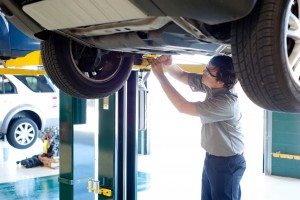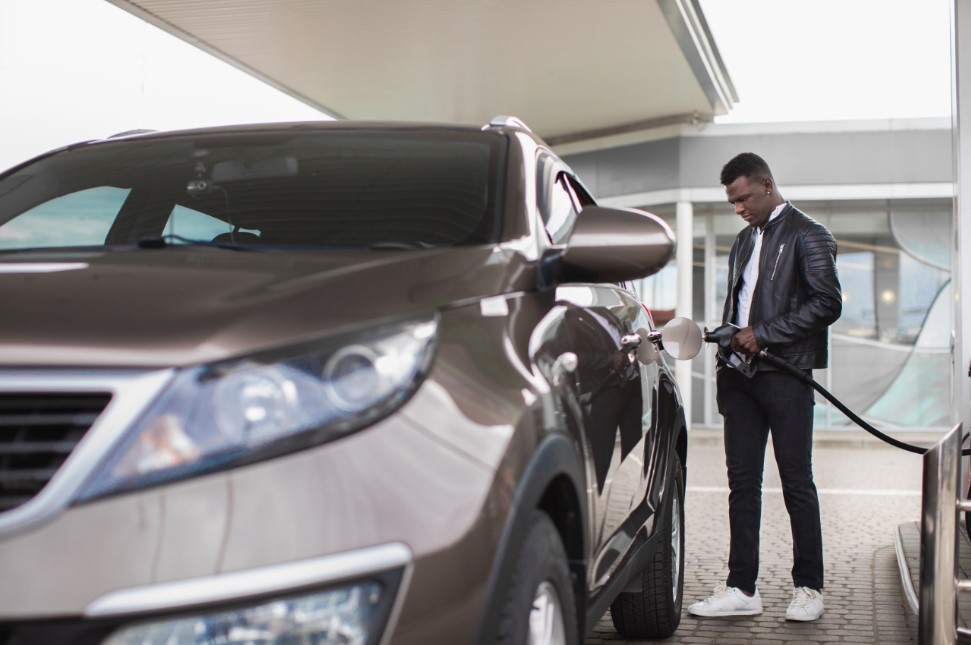What Is a Slipping Transmission? Is It Serious?

Imagine a commute to work like this one. You back out of your driveway, shift into drive and press the gas. Instead of a pleasant acceleration your car lurches forward but decides not to move. You try again. Same thing…then suddenly, you’re off! Whew! You reach 20 mph and hear your engine revving up. You glance over to see your RPMs are above 3,000 and hovering, and now your car will not go any faster. Hmmm…attempt the commute or head to the auto shop?
If you’re ever driving your car and notice that your vehicle is not shifting gears smoothly, it could be due to a transmission problem. It can be hard to determine what is causing the problem without getting a second opinion from an auto technician.
Today, our team of professional technicians are here with a quick guide about slipping transmissions, what causes slipping, how to tell if your transmission is slipping, and why they are seriously dangerous.
What’s a Slipping Transmission?
The term “slipping transmission” basically means that while your vehicle’s engine revs when you press on the gas pedal, the power isn’t transferred to the wheels of your car. In turn, your car doesn’t accelerate at all and the power is lost. Instead of spinning your wheels, you’re just burning fuel. How do you know if what you’re experiencing is a slipping transmission?
Signs Your Transmission is Slipping
There are many common signs to look for while driving. It’s possible to feel your transmission slip while driving and even idling while in Drive, on a flat surface with your foot off the brake. Watch for these signs:
Loss of engine power
Delayed acceleration
High-pitched whining noise in engine accompanied by grinding sounds
Excessive coasting
Slow downshifts
RPMs (revolutions per minute) that exceed 3,000 – 3,500
Involuntarily slips in and out of gear
Clutch isn’t working (for manual transmissions; in an automatic transmission it’s the torque converter)
Vehicle feels sluggish
Engine revving up high then slamming into gear
Causes of Slipping Transmissions
Although low transmission fluid levels or the wrong viscosity (thickness) of transmission fluid are most commonly to blame for slipping transmissions and poor acceleration, it can also be due to:
Old, low, contaminated, or burnt transmission fluid
Worn transmission parts
Problems with your torque converter (this is a masterfully designed component that participates in converting engine power to the transmission and then to other components that turn the wheels)
As soon as you notice any of these telltale signs or have a guess of why your transmission may be slipping, bring your car into your local mechanic right away to have your transmission inspected and serviced. You may be wondering how long you can drive with a slipping transmission? The better question is, “Should you drive with a slipping transmission?”
A Slipping Transmission is Bad for Your Car
A slipping and/or irregular transmission can signal major problems for your vehicle if left unattended, including unexpected breakdowns and a dangerous lack of control. While it doesn’t mean everything will fail in an instant, any slipping means that transmission service is needed as soon as possible.
Is it Safe to Drive with a Slipping Transmission?
We simply do not recommend driving with a slipping transmission as it can compromise and degrade the reliability of your engine and transmission, two of the most important parts of your vehicle’s driving system. If something is wrong with either one, you don’t want to make it worse.
Continuing to drive on a slipping or damaged transmission will cause additional damage to your system and make the transmission repairs more costly. We have a few thoughts about that.
How to Fix a Slipping Transmission
While you might feel that the first step in fixing a slipping transmission is a flush and filter replacement, the debris in the fluid may be helping with the actual friction needed for things to operate properly. If the fluid is replaced, the slippage may worsen and cause more problems. Getting a professional opinion on your repair options is always best.
Should I Repair or Replace My Transmission?
Most of the time, a repair is a much more cost-effective and affordable solution than rebuilding your car’s transmission. Repairing your transmission is definitely more cost-effective than replacing it. Start with getting a price estimate from an auto shop.
Can Slipping Transmissions Be Prevented?
This common problem can be avoided with regular transmission service and maintenance. Double-check with your car’s specific needs, but we recommend having transmission services performed and your fluid flushed and replaced every 60,000 miles.
Bring Your Car to a Local Auto Repair Shop
Don’t let your car’s safety just slip away without a second thought. To avoid the cost of transmission repairs in the future and additional damage to your car’s transmission, take your car to a local auto shop for inspection and service.
Get help evaluating your car’s transmission needs by finding your closest CBA auto repair shop and scheduling your visit.
This blog was written in June, 2013, and was updated in September, 2023, to reflect current trends and best practices.


[1].jpg)
sunwash-tech-with-customer.png)

